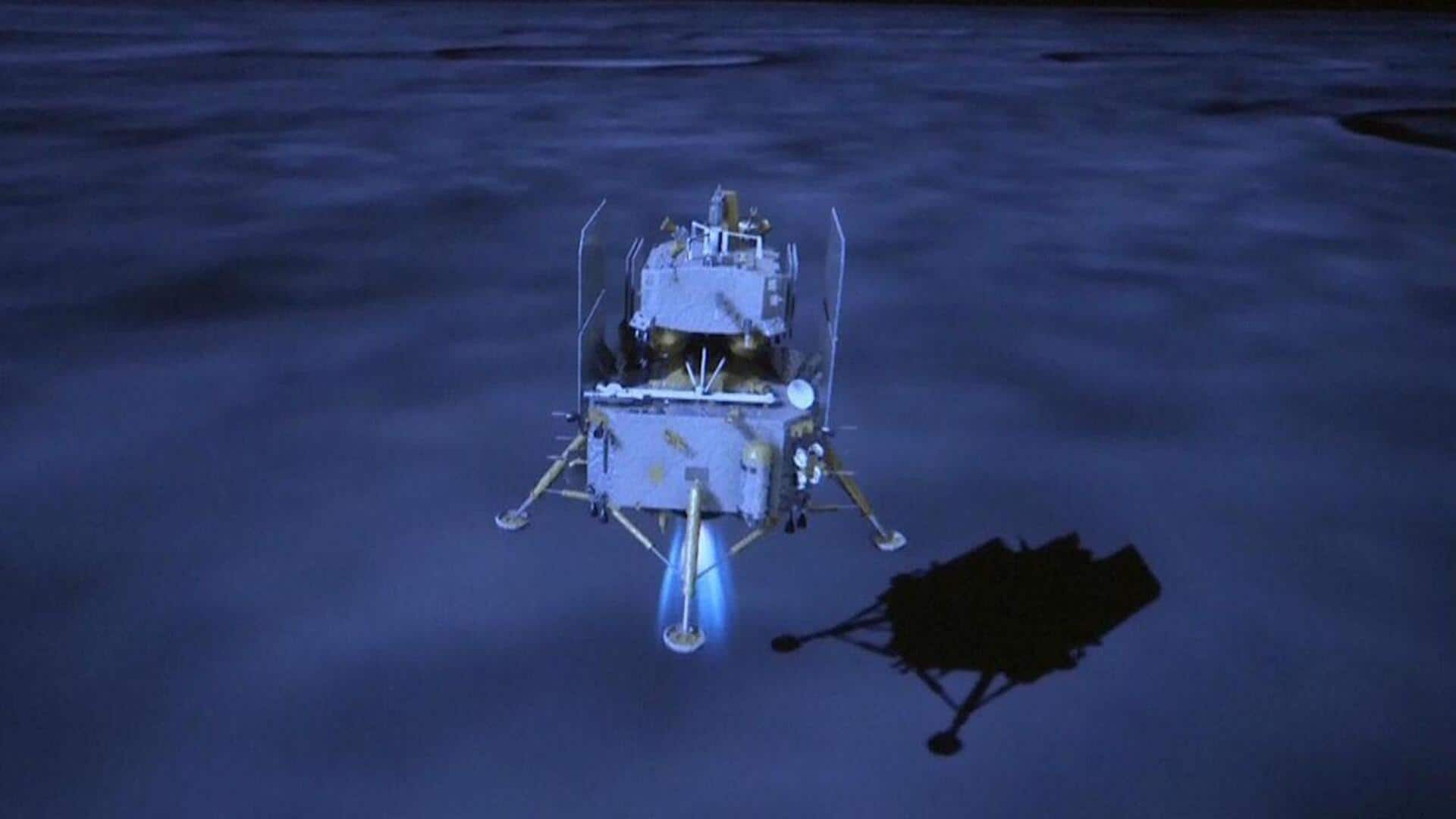
China's Chang'e-6 embarks on return journey from Moon's far side
What's the story
China's national space agency announced the successful lift-off of the Chang'e-6 probe from the Moon's far side, marking a significant step toward China becoming the first country to return samples from this region. The probe completed its sample collection mission on June 2-3 and departed at 7:38 am local time. The China National Space Administration (CNSA) confirmed that Chang'e-6 "withstood the test of high temperature on the far side of the Moon."
Sample collection
Chang'e-6 overcomes technical challenges, collects lunar samples
Unlike its predecessor, Chang'e-5, which collected samples from the Moon's near side, Chang'e-6 faced additional technical challenges. The probe had to operate without direct communication with Earth's ground stations and relied on relay satellite Queqiao-2 for communications. Using a drill and robotic arm, it collected soil samples from both the surface and subsurface of the Moon. After acquiring these samples, Chang'e-6 displayed China's national flag on the far side of the Moon for the first time.
Scientific anticipation
Lunar samples expected to provide insights into solar system
The probe is now in lunar orbit and will rendezvous with another spacecraft before transferring its cargo to a return module. The return module will then embark on its journey back to Earth, with a landing in China's Inner Mongolia region expected around June 25. Scientists worldwide are eagerly anticipating the return of these lunar samples, hoping they can provide insights into our solar system's origins.
Global impact
Chang'e-6 mission sparks national pride and international interest
The Chang'e-6 mission has been a source of national pride in China, with thousands of tourists flocking to viewing spots in Hainan province to watch the launch. Images of a hole left on the lunar surface by Chang'e-6's sample digging went viral on Chinese social media platform Weibo. The probe landed in the South-Pole Aitken Basin, an unexplored location that could provide insights into an epoch of heavy solar system bombardment.
International collaboration
Chang'e-6 mission highlights China's growing influence in space exploration
The Chang'e-6 mission also carries payloads from Italian, French, and Pakistani research institutes, as well as the European Space Agency. These will collect data on various space and lunar questions, underlining China's expanding role in international space exploration. James Carpenter, head of the European Space Agency's lunar science office, expressed hope for "extremely strong" collaboration between European and Chinese scientists in analyzing the lunar samples brought back by Chang'e-6.